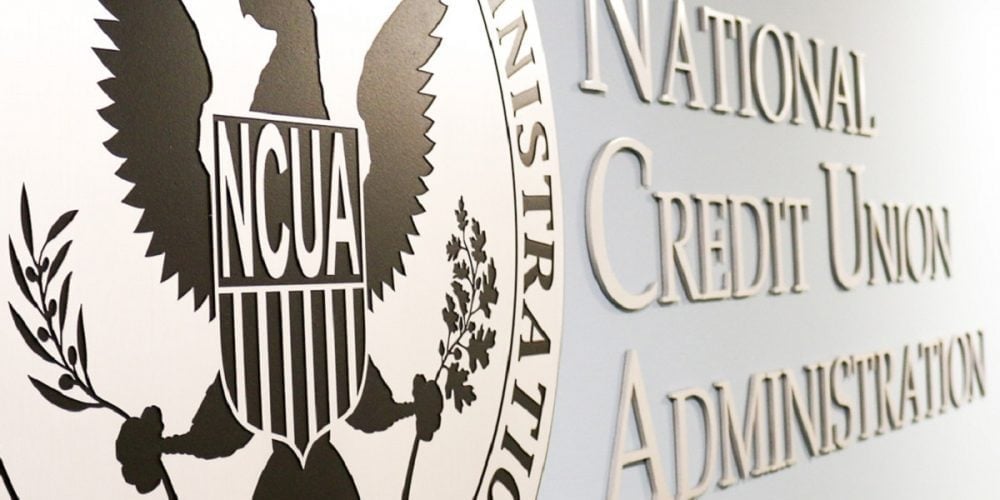by: Pablo DeFilippi, Membership Director, National Federation of Community Development Credit Unions
I'm pleased to announce that CU Insight and the National Federation of Community Development Credit Unions (the Federation) have teamed up to provide a new monthly Community Development Section that will highlight the innovative work the Federation and our member community development credit unions (CDCUs) are doing to bring affordable, yet sustainable financial services to low income consumers and underserved communities.
The community finance field was created by the Federation and other leading organizations such as the Opportunity Finance Network, which early on, recognized the need to respond to the systematic marginalization and redlining of entire communities by mainstream banks.
The Federation is a national, nonprofit association based in New York City that since 1974 has represented, supported and invested in credit unions with an explicit mission of serving predominantly low-income, financially underserved communities. Today, there are almost 250 CDCUs committed to providing access to quality financial services, affordable credit and development services to marginalized populations such as Native Americans, immigrants (in particular Latinos) and low-income African Americans.
In spite of the tremendous challenges credit unions have faced with the Great Recession and the meltdown of the Corporate Credit Union system, we’re thrilled to see a growing interest within the industry to expand credit union services to economically disadvantaged communities and populations. Over the last 20 months over 60 credit unions have joined the Federation, many of them high capacity and fast growing institutions such as Atlantic City (WY), Bay Federal (CA), Carter FCU (LA), Citizens Community (ND), Communicating Arts (MI), Cooperative Center (CA), CoVantage (WI), Cross Valley (PA), Coulee Dam (WA), Dakota Plains (SD), Fairfax County (VA), Forward Financial (WI), Freedom First (VA), Guadalupe (NM), Harborstone (WA), Hawaii First (HI), Industrial CU (WA), Jefferson Financial (LA), Maps CU (OR), MariSol (AZ), MECU (MD), Northland Area (MI), Old West (OR), Pyramid (AZ), Potlatch N 1(ID), Railway (ND), St. Louis Community (MO) and Tongass (AK), among many more. Our member credit unions provide services to almost 2 million consumers with combined assets of near $13 billion. This is a new breed of community development credit unions that is joining a select group of institutions such as Alternatives (NY), ASI (LA), Bethex (NY), Brooklyn Cooperative (NY), Cooperative Federal (NY), GECU (TX), Hope (MS), Latino Community (NC), Lower East Side People’s (NY), Mendo Lake (CA), Northeast Community (CA), North Side (IL), Opportunities CU (VT), Southern Chautauqua (NY), Santa Cruz Community (CA), Self Help (NC), Shreveport (LA), The United (WV) and many others that over the last 20 years have pursued financial inclusion for all.
The vast majority of the credit unions affiliated with the Federation and involved in community finance are also low-income designated and/or CDFI certified. Although these terms are often times interchangeable, there are important distinctions that ought to be taken into account, as together, they provide a formidable toolkit of resources, regulatory flexibility and expertise that can make a huge difference in your ability and capacity to provide viable solutions to the needs of LMI markets.
- Community Development Credit Union –CDCU: Designation obtained through membership with the Federation. It identifies its mission and commitment to serve low and moderate income consumers as well as underserved communities and marginalized populations. Currently there are CDCUs in 44 states from Vermont to Hawaii, bringing financial services to those who need them most. CDCUs can be found in rural areas, inner cities, and on reservations. Some have community charters, while others are occupational, faith-based, or multiple-group. CDCUs also vary on size, from some of the smallest to those with over $1-billion in assets. Regardless of their size, charter type or membership they serve, CDCUs are unified under one common goal: promoting financial inclusion. By becoming a CDCU, a credit union gains access to the Federation’s Capitalization Program which offers below-market, long-term non-member deposits; secondary capital; risk sharing deposits; as well as to a wide range of services and programs offered by the Federation to assist credit unions serving these underserved markets. In addition, CDCUs are well known to the funding community and specifically recognized by the US Treasury Department’s CDFI Fund. Furthermore, Fannie Mae specifically recognizes CDCUs as “preferred lending institutions” for its Special Affordable Housing Loan Goals.
- Low Income Credit Unions –LICU: Designation provided by the National Credit Union Administration (state regulatory agencies generally recognize those powers). To obtain the designation, a credit union must demonstrate that the majority -at least 50.01%- of its members, are low-income as defined in Section 701.34 of the NCUA Rules and Regulations (earn 80% or less than the median family income for the metropolitan area where they live or national metropolitan area, whichever is greater). This designation gives a credit union certain special powers, such as the right to accept non-member deposits and secondary capital. LICUs are also exempted from the cap limiting member business loans to 12.25% of their portfolio and can provide transactional services to non-members. Furthermore, these credit unions have access to NCUA’s Community Development Revolving Loan Program, which provides non-member deposits and Technical Assistance grants.
- Community Development Financial Institution –CDFI: Certification provided by the US Treasury Department’s CDFI Fund. To obtain the CDFI Certification credit unions must have a primary mission of promoting community development by providing activities directed towards improving the social or economic conditions of Low-Income people or residents or Target Markets and demonstrate that at least 60% of their financial services activities are directed to LI consumers and underserved populations. This certification makes credit unions eligible to participate in and/or to receive Financial Assistance and Technical Assistance Awards as well as to receive deposits from institutions participating in the Bank Enterprise Award Program. Since its inception the Fund has provided almost $1.3 billion to CDFIs, of which near $120 million has been awarded to credit unions.
The Federation was created by and for credit unions committed to serving economically distressed communities. Since 1974, we have helped credit unions meet the challenges of serving low-income communities which require implementing innovative approaches to empower people to effectively use credit union services. For almost forty years, we have worked to create new resources to help credit unions better serve their members. We’ve raised tens of millions of dollars of capital, pioneered new programs, won regulatory powers, and opened doors to public and private resources.
For instance, we played a leading role in winning special regulatory powers to strengthen the capacity of credit unions to serve low-income consumers. In addition to those benefits listed above, there are also some regulatory flexibility credit unions can exercise. In fact, and largely as a result of a White Paper we wrote some time ago regarding the need for examiners to better understand the challenges faced by credit unions serving predominantly low income consumers, NCUA published letter 10-CU-01 Supervising Low Income Credit Unions and Community Development Credit Unions that everyone serving economically challenged populations ought to be aware of. We also developed an alternate methodology to assist credit unions determine low income designation eligibility based on random sampling of actual members income data (borrowers) that has been recently approved by NCUA. This is significant because now credit unions that aren't eligible using NCUA's standard methodology have another way to demonstrate their eligibility.
The CDFI Fund:
A big part of our role is to expand access to resources that credit unions can use to better serve low-income consumers and underserved communities. The CDFI Fund was created in great part through our efforts and of the others in the community development field to increase the capacity of financial institutions serving this market. The Federation is the only credit union organization that specializes in providing services to credit unions which serve low- to moderate-income communities and meets periodically with the leadership of the CDFI Fund to ensure it remains responsive to the needs of credit unions.
Given that the vast majority of CDFI certified CUs are Federation members, we are the primary advocates for community finance and community development issues, and a significant part of our efforts focus on the CDFI Fund, which continues to be a key component of this administration’s community revitalization strategy. Even under the increasingly partisan political environment the nation faces, the Fund has received bipartisan support. To date, 96% of the almost $120 million the Fund has disbursed since its inception in 1996 has gone to Federation members.
We are pleased that under the current Administration, the CDFI Fund has experienced a dramatic increase in resources. We advocated vigorously for the inclusion of the CDFI Fund in the stimulus package and as a result, secured $100 million that the Fund made available in 2009 (of which credit unions received $18 million). In 2010 the Fund awarded $12 million to 20 credit unions (17 of them members of the Federation) and in 2011, 26 credit unions and the Federation received $28 million (again all but 2, Federation members). We’ve been successful in securing from Congress a level of funding (around $200 million) that will ensure the CDFI Fund continues providing the resources credit unions need to meet the needs of underserved consumers. In fact, under this new round (submission deadline 1/11/2012), the Fund will have $125 million available for awards.
The CDCI Program:
In 2010 we persuaded the Treasury department to include credit unions in their one-time Community Development Capital initiative, which resulted in $70 million invested as low cost secondary capital in 48 credit unions across the country. We’re now exploring the feasibility of establishing a mechanism through the CDFI Fund to issue bonds to securitize secondary capital to and loans generated by CDFI certified credit unions and other types of CDFIs.
The Federation Role within the CDFI Industry:
As of February 29 2012 there were 977 CDFIs listed by the CDFI Fund. At 22% credit unions represent the second largest subset, which we're happy to say, is also growing at a much faster rate of any other CDFI.
Just two years ago, there were less than 150 CDFI certified CUs, even though there are hundreds (or perhaps even thousands) of credit unions that may be eligible. The biggest obstacle had been the cumbersome process applicants needed to go through to obtain it. The Federation developed a methodology that greatly streamlined this process and though which most of the credit unions that have been certified over the last 2 years, have benefited from. We need to move the needle here and double the number of CDFI certified CUs within the next couple of years to truly capitalize on the momentum we're generating.
We believe that credit unions are the most effective, equitable and sustainable type of CDFI, which is a function of both governance structure and mission. In spite of that, the CDFI Fund still doesn't fully recognize the impact depository institutions make, not only in terms of loan deployment, but also in terms of connecting underserved consumers and business with the financial mainstream.
We're making significant progress though. For the last CDFI funding round, CDCUs received 18% of the total CDFI Fund awards and if we take into account CU affiliated organizations (Minority Support Center and the Federation) then credit unions received 20% of total award dollars, a historic high!! Even better is that for the first time ever credit unions succeeded at much higher rates than loan funds (or any other type of CDFI). Almost 60% of CDCU FA applicants received an FA award, compared to 45% of loan funds. CDCUs were awarded 47% of the dollars requested, compared with just 31% for loan funds.
The CDFI Fund just released a report CDFI Industry Analysis -Summary Report, which provides hard data to support the key comparative advantage of CDCUs over CDFI loan funds: The paper shows that every dollar the CDFI Fund grants to a median loan fund generates $1.10 in financing capital, while the same $1 granted to a median credit union generates ten times that amount. Even better, CDCUs are self-sufficient, and they leverage their capital from the same communities where they lend.
That's exactly the message we've been sending to the CDFI Fund, among other things that would help us level the playing field for credit unions. Our goal is to ensure CDCUs get an equitable share of CDFI funding. In fact, we're currently working on a response to the CDFI Fund request for comments for the FY 2012 FA/TA application process and have submitted similar comments regarding CDFI certification/recertification, Target Market accountability and random sampling to demonstrate eligibility.
The Federation is the credit union authority in all things CDFI. I invite you to read a study we produced, entitled Credit Unions, Community Development Finance and the Great Recession. This publication was recently released by the Federal Reserve Bank of San Francisco, as part of their Working Papers series. The paper offers the most detailed history to date of the role of community development credit unions (CDCUs) within the Community Development Financial Institutions (CDFI) movement; shows how federal investments helped preserved and expanded CDCU services during the Great Recession; and recommends ways to strengthen CDFI depository institutions of all types through best-practice models and innovative collaborations to increase impact.
Over the next few months, you'll be reading about some of the innovative programs and solutions CDCUs and the Federation have developed to meet the needs of LMI consumers and underserved communities. Welcome to this fascinating world!
Learn more: Come to the Federation's 38th Annual Conference on Serving the Underserved. Atlanta (GA) June 14-16 2012. Click here for more information.
Pablo DeFilippi is the Membership Director for the National Federation of Community Development Credit Unions, a national, nonprofit association that represents, supports and invests in credit unions serving predominantly low-income, financially underserved communities. DeFilippi has more than 20 years of experience in community finance working with regulated financial institutions both in the domestic and international arena. www.cdcu.coop






